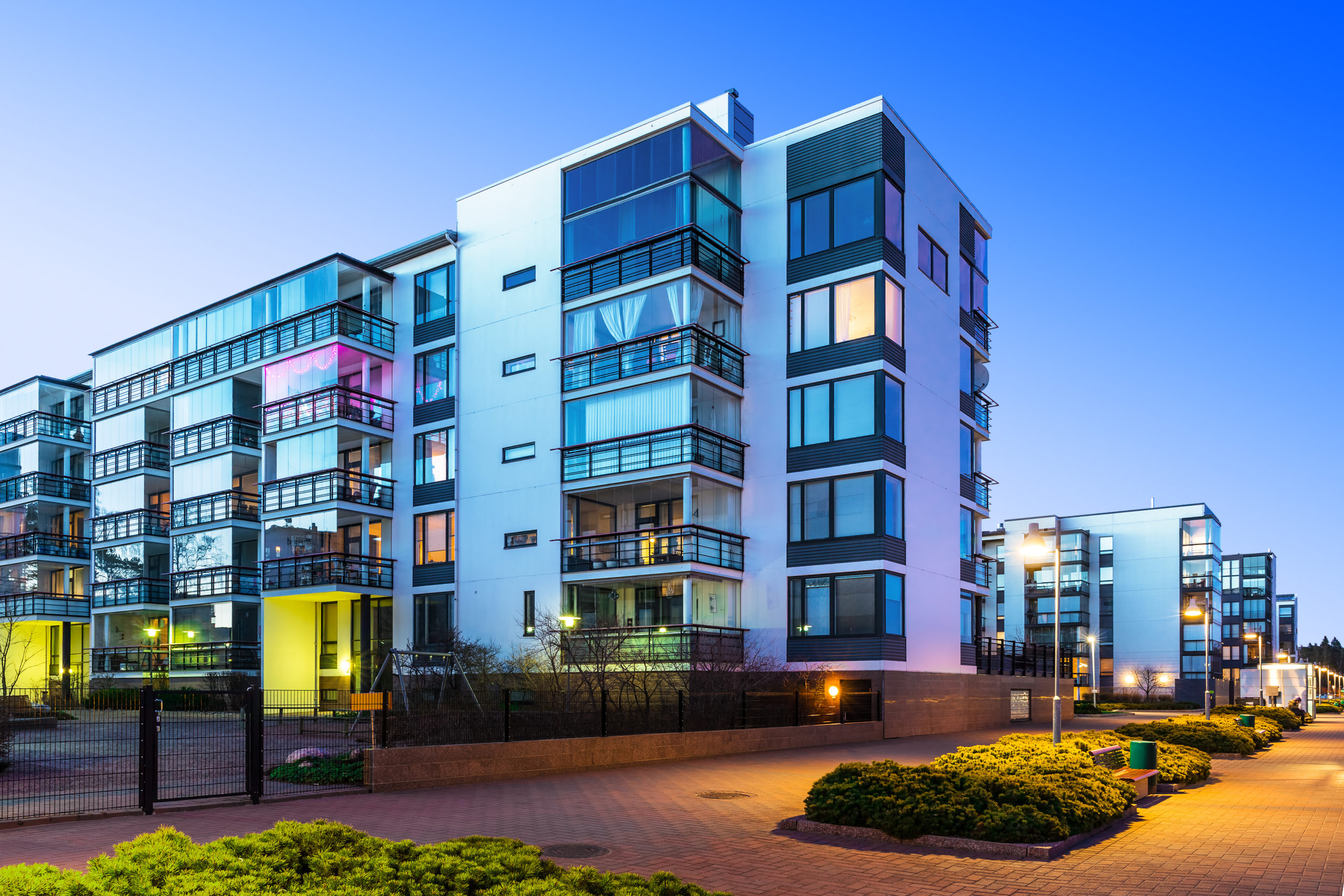We Americans can get a little paranoid when it comes to foreign investors buying up our real estate. It seems that every time the market gets hot, overseas buyers exchange their more colorful currency for greenbacks and start buying properties in the U.S. During the dotcom bubble, it was the British and Germans. The boom before that, the Arabs. Before that, it was the Japanese. And yet our culture persists, and we still own the vast majority of the land in this country, even in the most welcoming — and highest-priced — port cities. It’s happening again now, though. Non-U.S. individuals, corporations and sovereign wealth funds are once again investing heavily in housing throughout the States.
Moving in
“Foreign investment volumes increased [in U.S. multifamily properties] by 29.3% in 2018,” according to a Bisnow article citing a JLL research report. Not to worry, though. The new neighbors are reflexively polite. “Canadian investors alone deployed $9.8B over the year, 31.5% more than the previous high in 2015,” Dees Stribling writes for Bisnow. “Beginning early last year, for example, the Canadian Pension Plan Investment Board and GIC, an organization that manages Singapore’s foreign reserves, partnered with Atlanta-based Cortland to buy up to 10,000 Class-B apartment units across the U.S. and remake them into Class-A units.”
Canada might be the largest non-U.S. player in the market, but it is hardly the only one. Other names on the leaderboard might surprise you. According to the 2019 report itself, “Rising 23.8 percent from one year ago, annualized cross-border investment activity remains near record levels at $14.6 billion. Canada-, Bahrain- and Singapore-based investors drove continued investment, contributing 67.5 percent of quarterly foreign capital in Q1 2019.”
Bahrain and Singapore are not the names you might expect to see on the list. According to the National Association of Realtors, these are not the nations that are buying up general residential real estate, which is primarily single-family. On that list, Canada comes in second to China, followed by India, the United Kingdom, and Mexico.
Bahrain has a population of 1.6 million, while that of Singapore is 5.8 million. So why are these countries with as many residents as Idaho and Wisconsin respectively gaining such an outsized footprint Stateside? While it’s hard to say for certain, it might have a lot to do with investments made by their sovereign wealth funds. Two of the top 10 in the world are domiciled in Singapore, with combined assets of $815 billion. Next to Singapore, Bahrain pales in comparison, but a $15.4 billion valuation will keep them from having to drive Uber. With that much money to invest, anyone might consider buying into a gleaming new addition to the midtown Manhattan skyline.
There are reasons for non-U.S. institutions to acquire space in America even if they have mere millions to burn.
The hype
One invaluable source for this article is a 2017 CBRE report titled “U.S. Multifamily Housing: A Primer for Overseas Investors”. If there’s one criticism to be had of it, it’s that it often explains why multifamily can be viewed as a better investment than retail or office space, rather than why the American multifamily market is unique from the perspective of a cross-border backer. You can see the full report if you want CBRE’s “10 Reasons to Invest in U.S. Multifamily,” but really only four are relevant once you’ve considered that criticism.
No. 3: Favorable regulatory environment. “With respect to ‘social’ housing, the U.S. has a lower level of subsidized/low-income inventory than many other countries. These properties require additional expertise on the regulatory environment, but represent only a small portion of the total inventory (estimated 5% to 10%).”
No. 5: Liquidity. Real estate is not an inherently liquid asset but, it is far less illiquid in the U.S. than in other corners of the world. According to CBRE, this is due to the enviable degree of access to mortgage capital here: “The availability of debt capital is important for investment in any commercial real estate sector. Leverage is used for most transactions, with acquisition financing usually in the 50%-to-75% loan-to-value (LTV) range.” The article also cites the diversity of sources of multifamily real estate debt: banks of course, but also life insurance companies, commercial mortgage-backed securities, conduit lenders and particularly government-sponsored enterprises: Fannie Mae, Freddie Mac and the Federal Housing Administration, major sources of debt capital for existing assets in the U.S., don’t have analogs in many countries.
No. 8: Short-term leases allow immediate adjustment to market conditions. American renters are so conditioned to one-year leases that they can be forgiven for thinking that’s the global standard. It isn’t. It’s a factor of the “American dream” of homeownership; it is assumed that every renter is temporarily sojourning in their apartment rather than calling it their permanent home. In other countries, even fairly well-off people consider renting more common. In Singapore, for example, the typical lease is two years long. In Germany, it can last lifetimes or even generations. So imagine you were born and raised in Germany and grew up with the impression that landlording was a dicey financial proposition because of all the tenant protections. Then you discover that, in the U.S., your contract with your tenants expires on an annual basis. That means you’re not locked into the relationship for more than 12 months. You can raise their rent unless local ordinance intercedes. Given cause, you can evict them.
 “In periods of high rent growth, the short-term leases provide owners the ability to adjust rents upward quickly,” according to CBRE. “More importantly, if the U.S. moves into a period of higher inflation, short-term leases provide owners with the ability to make upward adjustments to cover the increased costs of operations.”
“In periods of high rent growth, the short-term leases provide owners the ability to adjust rents upward quickly,” according to CBRE. “More importantly, if the U.S. moves into a period of higher inflation, short-term leases provide owners with the ability to make upward adjustments to cover the increased costs of operations.”
No. 10: Third-party leasing and management options. In America, unlike in many other countries, owning multifamily real estate can be a passive, turnkey investment. “[T]he 50 largest multifamily management companies in the U.S. managed 3.2 million units,” CBRE reports, citing the National Multifamily Housing Council. “The largest 50 firms each managed at least 30,000 units; the top five are each responsible for more than 100,000 units.” These management companies not only provide tenant interface and local knowledge, but they also add a professional gloss to the process that most financial investors haven’t been steeped in. Whether the task is to coordinate vendor schedules or using pricing software to optimize revenue, sometimes it’s best to leave it to the pros, and an outsized number of those pros are focused on U.S. markets.
But let’s add one more reason why investors are looking at apartment buildings in the U.S.: immigration.
“A great deal of foreign investment is motivated by a desire to immigrate to the United States or to provide financial support to dependent students attending schools in the United States,” according to a 2018 Socotra Capital blog post by Adham Sbeih.
If deep-pocketed overseas investors are looking to reside permanently in the States, buying multifamily real estate can satisfy two requirements at once: making the case for EB-5 visas, and securing a place to live once they get here. We’ve seen this happen. We’ve also seen wealthy people from outside the U.S. buy up a block of apartments, assign one to a child studying at an American college, and collecting rent on the others. If the kid decides to stay in the States, she continues to have a roof over her head. If she decides to return to her home country, that’s one more unit available to rent.
The reality
Even with all these use cases and all these anecdotes, foreign investors ownership of U.S. real estate is far lower than you might guess. “Currently only about 4% of multifamily holdings are owned by non-U.S. companies,” according to CBRE. That said, the number might be rising, at least in the short term. “[I]nvestors from foreign countries accounted for $13.65 billion, or about 8%, of the $174.5 billion of apartment property sales that took place in the United States last year,” Orest Mandzy wrote for Trepp’s blog in April, citing another CBRE study.
And yet, that surge might end up being too short-lived to constitute a trend, if the NAR’s findings have any bearing. The Realtors look mainly at single-family properties, so their research presents a far-from-perfect leading indicator. That said, non-U.S. citizens’ purchase of American residential real estate has fallen off considerably in recent months.
“Foreign buyers purchased to $77.9 billion of U.S. existing-homes during April 2018–March 2019, a 36 percent decline from the level in the previous 12-month period ($121 billion),” according to the NAR. “The slowdown in global growth, tighter controls on the outward flow of capital from China, and a low inventory of homes for sale likely account for this huge drop.
A similar decline was seen among non-resident foreign investors. Combined, resident and non-resident foreign investors accounted for only 5% of the $1.6 trillion existing-home market over those twelve months, down from 8% in the year-earlier period.
So yes, the hot U.S. housing market has attracted capital from all around the world. And as long as the boom times continue, you can expect foreign investment to pour in. But cycles end and, when this one does, there’s every reason to expect a regression to the mean. But there are reasons why that mean isn’t 0%. There are reasons why overseas investors look favorably on U.S. real estate investment even in lean times. One reason is that it’s largely unrestricted. No matter how many tariffs Washington has placed on Chinese goods, it hasn’t told the Chinese — or the Russians, or the Europeans or anyone else not connected with state-sponsored terrorism — that they can’t buy up an entire time zone if they wanted. Just pay the taxes as if you were a U.S. citizen or, if you prefer, a 30% flat tax.
 Now compare that with the byzantine real estate laws in effect elsewhere. “Changing rules and regulations in other countries are also effecting where global investors are choosing to put their capital,” according to UpNest. “France has levied new taxes on investors. London, which was long the international favorite has stumbled, and put new taxes on wealthy investors. Even Canada has begun penalizing foreign investors with new taxes, and fines for having a vacant property, in an effort to reduce foreign investment, and maintain affordability.”
Now compare that with the byzantine real estate laws in effect elsewhere. “Changing rules and regulations in other countries are also effecting where global investors are choosing to put their capital,” according to UpNest. “France has levied new taxes on investors. London, which was long the international favorite has stumbled, and put new taxes on wealthy investors. Even Canada has begun penalizing foreign investors with new taxes, and fines for having a vacant property, in an effort to reduce foreign investment, and maintain affordability.”
In that case, as long as U.S. public policy remains friendly to foreign investors in real estate, there will be euros, pounds, yuan, Canadian dollars and whatever it is they use in Bahrain available for multifamily projects here.


